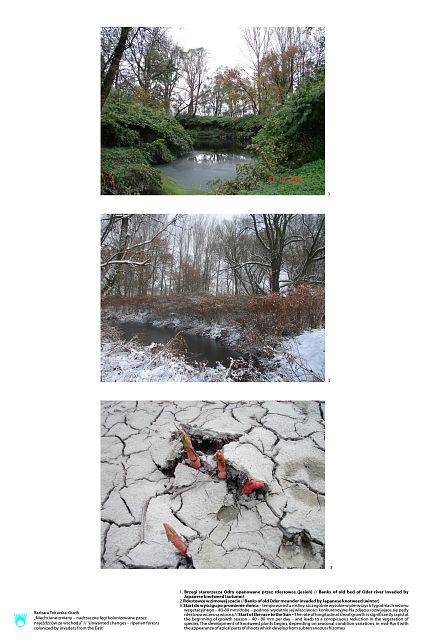
Description popularizing the research project
Planters and allotment holders fight an eternal and futile struggle with burdensome plants.
Recently foresters and botanists have joined ranks of the fighters as they try to drive some beautiful plants from riparian forests. These are very ornamental and impressive knotweeds like Reynoutria japonica, Reynoutria sachalinensis and Reynoutria bohemica. Their slender stalks with large heart-shaped leaves quickly cover large stretches of land with dense vegetation. When they bloom delicate clusters of tiny flowers hang among the leaves. Abundance of nectar lures bees and other insects. Moreover knotweed are not very demanding and can grow even in infertile soil, wastelands and on edges of roads. Gardeners saw the advantages of knotweed in the 19th century when it was brought from east Asia. Soon new varieties were grown, given poetic names and planted in gardens throughout Europe.
So what a catch may be hidden among the virtues?
Strangers from Asia quickly escaped gardeners and the new land turned out to be very hospitable for them. No survival school was necessary for them to adapt to new conditions. Their rapid growth of several centimeters a day outpaces native species, which have no chance to bloom and seed in their shade. Knotweeds quickly invaded forests colonizing water banks where they drove even traditional willows. Eliminating species after species they covered whole river valleys. Just like a mythological many-headed hydra knotweeds are able to grow from tiny fragments of roots and they push forward leaving behind foresters, botanists and even producers of herbicides.
Abstract
This study deals with the current issue of synanthropisation of the plant cover which manifests itself among others by spreading of species outside the limits of their natural distribution range (biological invasions). The aim of the undertaken studies was the estimation of a type and scale of threat posed by alien plant species with regard to native plant diversity. The studies were carried out on the example of Reynoutria (Fallopia) species (knotweeds) which are considered to be invasive in our country as well as in other regions of the world. This is an attempt to determine the impact of these plants on the composition and diversity of natural components of the herb layer in floodplain forests. Investigations were performed on permanent study plots situated in patches of a floodplain forest which have been preserved in valleys of the Soła, Biała, Jasienica and Odra rivers. The results of field studies have confirmed the hypothesis that Reynoutria exert a reducing influence on the native components of floodplain forest herb layer. This impact is, however, different with regard to various life forms and ecological habitat groups of plants. Increase of surface coverage by knotweeds does not significantly influence the development of early spring geophytes which are able to go through their full life cycle.

